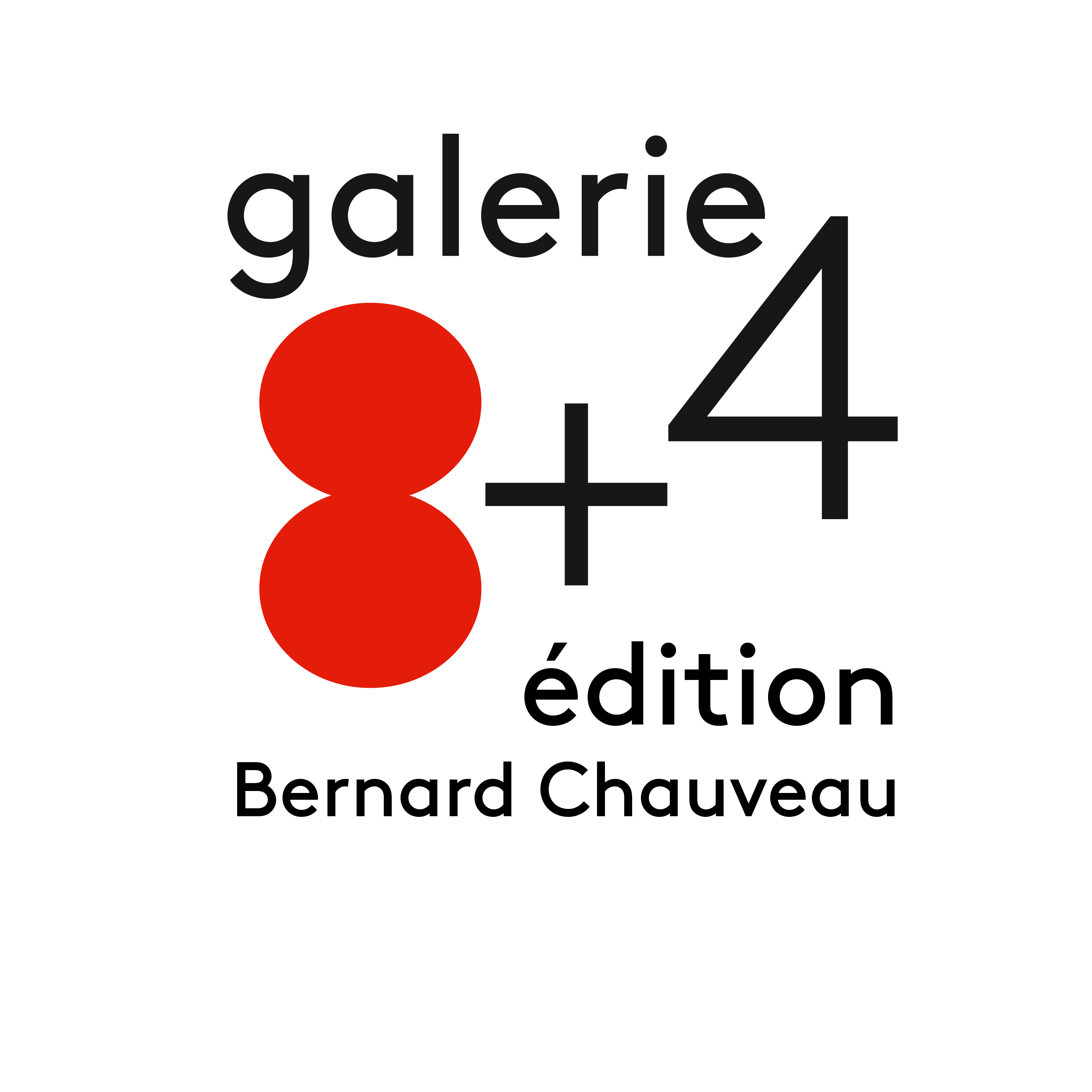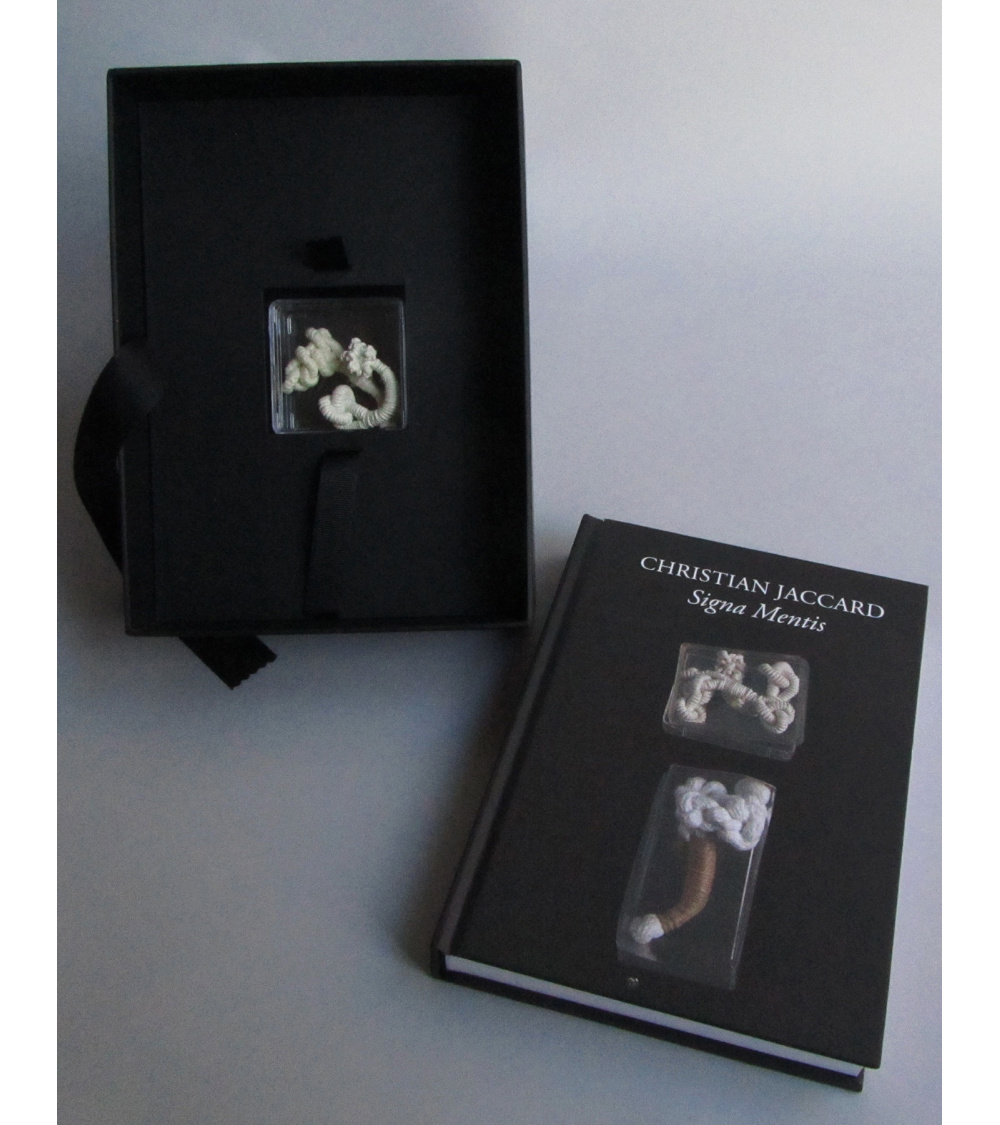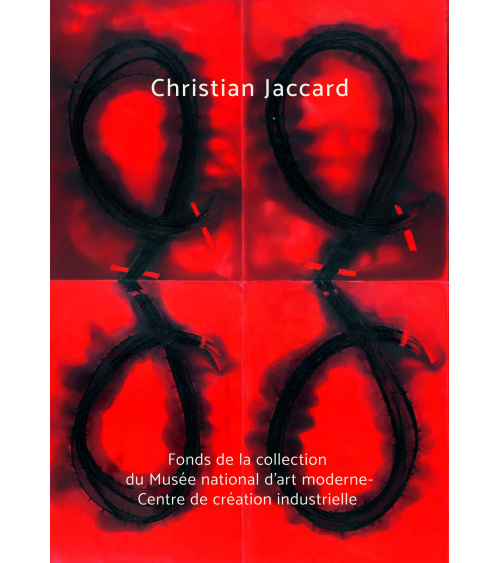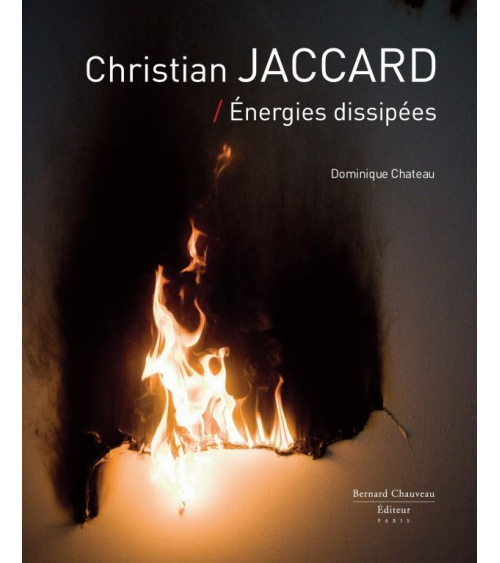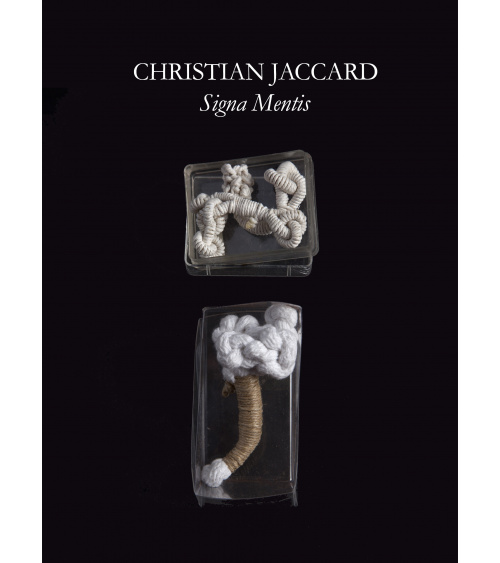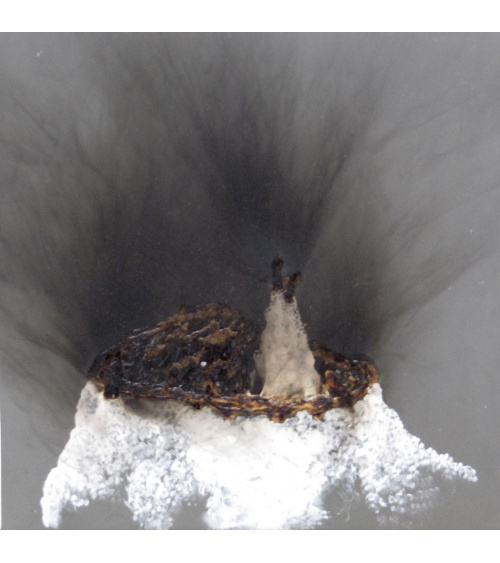Christian Jaccard - Signa Mentis
This edition includes a copy of the book Signa Mentis, accompanied by an original box inspired by "Boîte en acétate contenant couple d'outils", from 2012.
This head edition includes a copy of the Signa Mentis book, accompanied by an original box inspired by Boîte en acétate contenant couple d’outils, 2012, one of the knots being hand made by the artist and the other, realised from the original one, by prototyping and 3D printing by CREAFORM (Vierzon, France).
"Trying to distance myself from the concept invented in 1913 (by Marcel Duchamp). On my part, it is about praising the digital fact, of catching in hand, of the culture of touch and of the proning by an intuitive and stubborn production which differenciates itself from Ready Made of which the procedure substracts from manual fabrication and speculates about the appropriation of the object."
Christian Jaccard.
12 copies including :
8 copies numbered from 1 to 8
4 AE copies numbered from 1 to 4 apportioned in the following way :
1 copy for the artist
1 copy for the author
1 copy for the publisher
1 copy for the museum
Printed 2015
Data sheet
- Size
- 15,5 x 21 cm
- Language
- Bilingual edition: French and English texts
- ISBN
- 9782363061256
- Edition
- 8 copies + 4 AE
- Justification
- Bound
- Technique
- Rope and 3D printing
- Publication date
- 2014
Jaccard (Christian)
Christian Jaccard was born in 1939 in Fontenay-sous-Bois, France.
He lives and works in Paris.
After having studied at the school of fine arts Paris, Christian Jaccard perturbs very soon the traditional act of painting.
Free of the frame, the canvas, placed on the ground, is printed with the help of what he calls “tools”: natural objects (plants and insects), paper, ribbon. His work thus places him in line with preoccupations close to those of the group Supports/Surfaces.
In the 1970s, Jaccard uses other « tools » like the rope, the string, and, most of all, knots. All these replace the brush, in order to leave their prints on the canvas. He equally burns his paintings thanks to the slow burning fuse, which draws traces on canvases and other mediums through its combustion.
Starting with the year 2000, along with his outdoor works in abandoned places (industrial fallow lands), the question of the painting emancipates itself without denying its origins. His studio thus becomes a nomadic and ephemeral laboratory.
No customer reviews for the moment.
